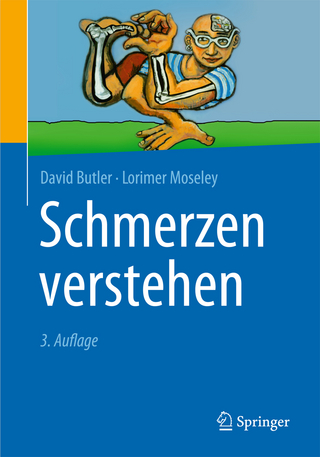
A Practitioner's Guide to Clinical Cupping
Lotus Publishing Limited (Verlag)
978-1-913088-33-0 (ISBN)
Cupping—an ancient therapy which uses vacuum cups placed over the skin to treat a wide range of health conditions—appears in one of the earliest medical textbooks ever written and has been used in cultures around the world for thousands of years. Though much maligned by its perception as a “complementary therapy,” the emergence of modern research supporting the use of cupping to treat musculoskeletal conditions has seen it enjoy a huge resurgence in recent years. You only need look at the unmistakable cupping marks visible on Olympic swimmers to see how valued it is within professional sport.
An ancient treatment, a new way
Presented with clear descriptions, color photographs, and QR codes linking to online video tutorials, Lawrence’s approach to dry cupping offers enhanced treatment outcomes and methods that are more readily accepted by Western medicine and modern manual therapy bodyworkers. These are techniques that deliver maximum benefit whilst minimizing some of the less desirable after-effects of more traditional methods.
Starting with the history of cupping, the book guides you through the principles of application with illustrated protocols for musculoskeletal conditions of the foot, ankle, lower leg, knee, thigh, hip, back, shoulder, wrist, hand, elbow, and neck. Whether you are looking to treat Achilles tendinitis, carpal tunnel syndrome, or low back pain, Lawrence illustrates why cupping is a safe and effective choice of treatment.
Where this book differs from others, however, is that it introduces the concept of using passive and active movement in a treatment. In this way, cupping can be viewed as an enhanced form of both massage and exercise rehabilitation. Couple this with a valuable understanding of how these techniques influence the nervous system and cupping now stands up to “evidence-based” scrutiny. This is modern cupping!
Daniel Lawrence is a British physiotherapist with a clinical background in both sport and general healthcare settings both within the national health service and private sector. Lawrence currently serves as European Director of Education for the popular RockTape brand. His YouTube channel “The Physio Channel” continues to serve as a great resource for therapists around the world.
Foreword
Introduction: Cupping—an Ancient Treatment, a New Way
1. The History of Cupping Therapy
Early History
Origins in Different Cultures
More-Recent History
Conclusion
2. Cupping Application Principles
Introduction
Contraindications
Precautionary Usage
Areas to Avoid
Getting Started
Using Oils, Creams, and Waxes
Working with Body Hair
How Long Should You Cup For?
Applying the Cups
Removing the Cups
Cleaning and Sanitizing
3. The Mechanics of Cupping
4. The Physiology of Cupping
Understanding the Circular Markings
Immune Response
Summary: Cupping Marks
Cupping and Blood Flow
Conclusion: Cupping and Blood Flow
5. Cupping and the Nervous System
Introduction
Understanding Pain Relief
Encouraging Movement
Smudging and Correcting Sensory Input
Sensory Discrimination Training with Vacuum Cups
Conclusion
6. Cupping for the Foot, Ankle, and Lower Leg
Introduction
Getting Started
Foot Techniques
Ankle Techniques
Cupping for Achilles-Tendon Pain
Cupping the Gastrocnemius and Soleus
Cupping for Shin Pain
Conclusion
7. Cupping for the Knee and Thigh
Introduction
Getting Started
Knee Techniques
Lateral Thigh Cupping Techniques
Hamstring Techniques
Quadriceps Techniques
Adductor Techniques
Conclusion
8. Cupping for Hip Pain
Introduction
Caution: Hip Pain in Children
Getting Started
Lateral and Posterior Hip Techniques
Anterior Hip Techniques
Piriformis Technique
Conclusion
9. Cupping for Back Pain
Introduction
Contraindications
Stages of Nonspecific Back Pain
Getting Started
Passive Cupping
Active Cupping
Advanced Techniques
Cupping for Back-Pain Rehabilitation
Conclusion
10. Cupping for Shoulder Pain
Introduction
Contraindications
Getting Started
Active Cupping for the Glenohumeral Joint
Glide Cupping
Scapular Cupping Techniques
Active Cupping for the Scapulothoracic Joint
Glide Cupping the Thoracic Spine
Shearing Technique for the Pectoralis Major
Shearing Technique for the Latissimus Dorsi and Teres Major
Advanced Scapular Technique
Conclusion
11. Cupping for Wrist, Hand, and Elbow Pain
Introduction
Lateral Forearm Techniques
Medial Forearm Techniques
Carpal Tunnel Cupping
Cupping the Hand
Conclusion
12. Cupping for Neck Pain
Introduction
Getting Started
Passive Cupping Techniques for the Neck
Active Movement
Glide Cupping
Advanced Neck Cupping Techniques
Conclusion
| Erscheinungsdatum | 01.12.2022 |
|---|---|
| Zusatzinfo | 150 colour images and photographs |
| Verlagsort | Chichester |
| Sprache | englisch |
| Maße | 170 x 240 mm |
| Themenwelt | Medizin / Pharmazie ► Medizinische Fachgebiete ► Schmerztherapie |
| Medizin / Pharmazie ► Medizinische Fachgebiete ► Sportmedizin | |
| Medizin / Pharmazie ► Physiotherapie / Ergotherapie | |
| ISBN-10 | 1-913088-33-2 / 1913088332 |
| ISBN-13 | 978-1-913088-33-0 / 9781913088330 |
| Zustand | Neuware |
| Haben Sie eine Frage zum Produkt? |
aus dem Bereich


